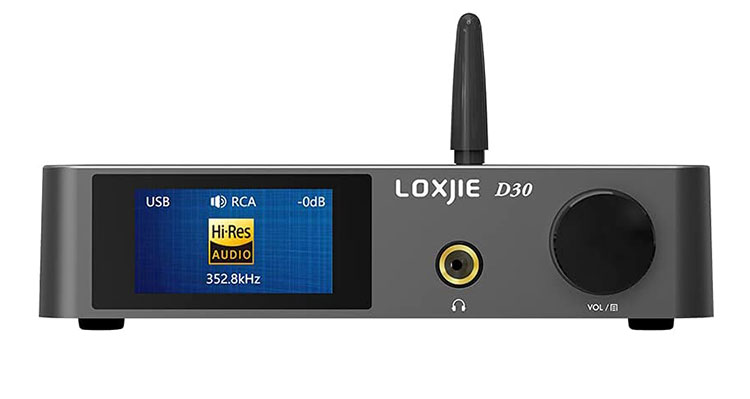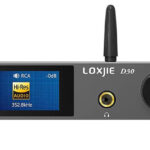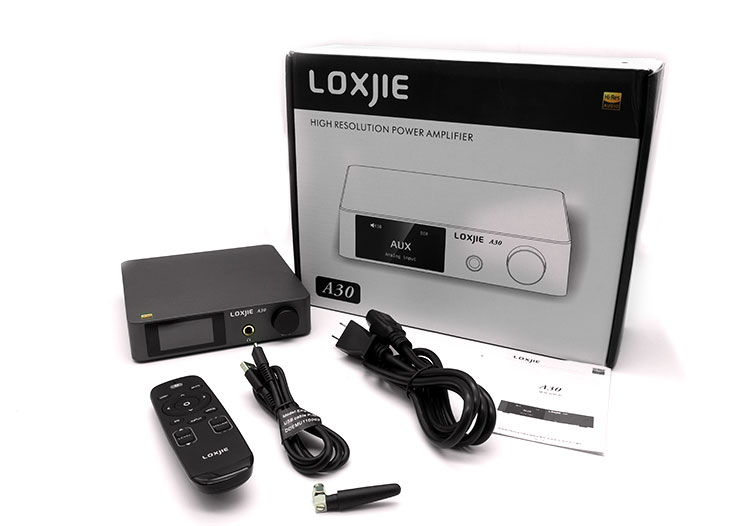The Loxjie D30 is a compact desktop DAC and headphone amplifier capable of MQA and up to DSD512 decoding. It is priced at $259.99
Disclaimer: The Loxjie D30 sent to us is a sample in exchange for our honest opinion. We thank the team at Loxjie for giving us this opportunity.
To read more about Loxjie products we have reviewed on Headfonics click here.
Note, this 2-page review follows our new scoring guidelines for 2021 which you can read up on here.
Loxjie is a new brand for us here at Headfonics but they have been operating for around 4 years with a specialism in competitively priced DACs and digital amplifiers in a not too dissimilar fashion to brands such as Topping and SMSL.
I first heard about them with their P20 which is a full balanced hybrid tube amplifier with balanced inputs and outputs retailing for a very affordable $99.99. So, when Loxjie reached out to us to let us review the D30, I was intrigued at what kind of features this little DAC/Amp would bring to the table for their $259.99 SRP.
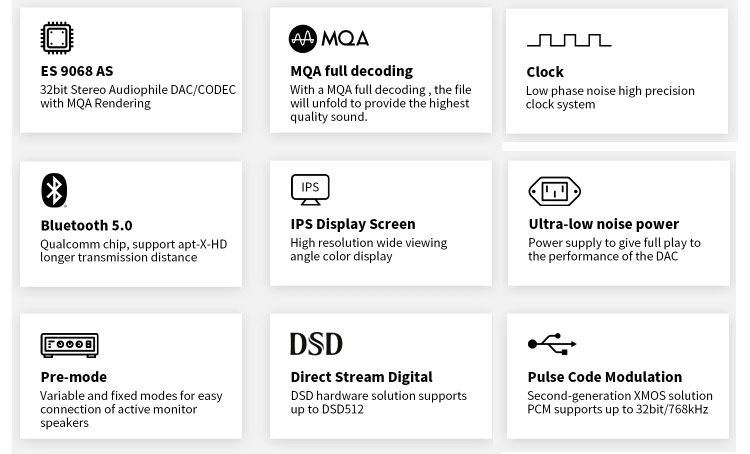
Tech Highlights
Despite having an amplification stage the D30 is primarily marketed as a DAC. Inside, Loxjie has gone with the ESS 9068AS DAC implementation with a second-generation XMOS USB controller with a decoding capability of up to 32BIT/768kHz PCM, DSD 512, and MQA.
Unlike most DACs we have reviewed thus far, the MQA decoding capabilities on the D30 are not just limited to USB. It can also extend to both the coaxial and optical connections which means that the D30 can even decode MQA-CD formats.
To keep jitter at a minimum, the D30 also employs an ultra-low noise power supply, and phase lock loop clocks with 2 crystal oscillators one for 44.1kHz based signals and another for 48kHz based signals. The selection of components allows the D30 to measure pretty well, having a THD+N of 120dB, and a dynamic range of almost 124dB.
Aside from RCA outputs, the D30 also has a single-ended headphone output powered by an OPA1612 opamp from Texas Instruments, which is quite common among smaller DAC/Amps. Using the OPA1612 in the D30’s headphone amplifier section allows it to output up to 110mW into 32Ω single-ended.
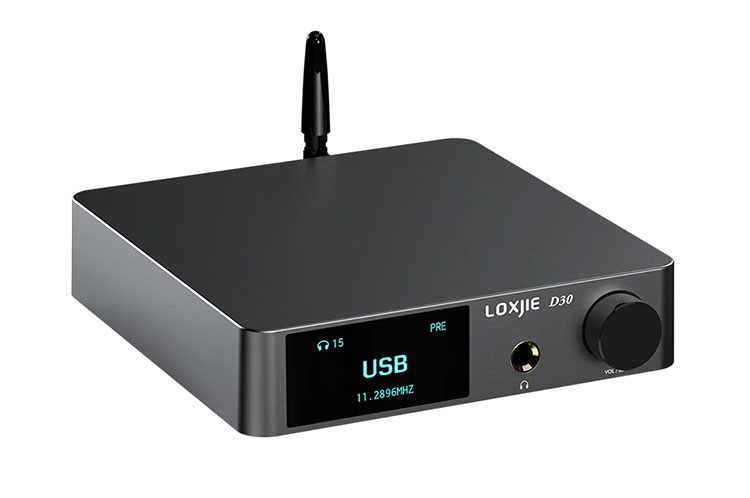
Design
The D30 is a relatively small and compact DAC, measuring just 151mm x 170mm and taking up very little desk space. Whilst it is not the biggest component there is substantial heft in the chassis, since it’s made of a high-quality aluminum construction that will not only look good but is also designed to mitigate vibrations that may creep in as noise.
The D30 has enough space at the rear of the device for a wide range of digital inputs, including a full-sized USB B as the DAC input as well as single-ended RCA analog outputs. The D30 also has a standard IEC plug that can be swapped for any other preferred IEC plug.
To have cleaner power going into the DAC circuit, the D30 has an internal PSU that can be connected using the standard IEC power lead. Which is good news for those who might want to use an aftermarket power cable for improved noise isolation.

I/O
The inputs available to the D30 are what you would typically find in most DACs, where there are options for USB, coaxial, Toslink, and Bluetooth 5.0.
Although there is a headphone amplifier section on the D30, there isn’t an option to bypass the internal DAC on the D30. Aside from the headphone output, the D30 also has an option for single-ended outputs available at the rear.
Controls
Having a full-color IPS display on the front fascia of the device allows the D30 to display most of the pertinent information while the DAC is on. The default display shows the input, output, volume, file type, and sampling rate currently being decoded by the DAC.
There are 2 main ways to interact with the D30, the first is using the volume knob on the right of the screen. The volume knob works as both a volume knob and menu navigation. The other way is using the remote control that is also provided in the box.
In the menu, there are options for inputs, outputs, PCM filters, Pre mode, DPLL, BT clear, Dimmer, Brightness, and Reset. It’s interesting to see that the D30 has an option that allows the user to control the active outputs, so either the DAC output will be routed to the headphone amplifier section in front or to the RCA outputs at the rear, but not both.
Packaging & Accessories
The Loxjie D30 arrives in a standard cardboard box with foam inserts to protect the contents from damage during storage and transport.
While the box that it comes in is simple, the contents are thoughtfully assembled. Aside from the D30 itself, the package also contains a standard IEC power cord, the Bluetooth aerial, a USB cable, a remote control, and of course the manual and some documentation.
These will generally get you up and going for the most part, except for when you’d want to connect the D30 to an off-board amplifier or active speakers.
Sound Impressions
My initial sound impressions are based on the single-ended RCA outputs of the D30. There will be a subsequent section for the headphone amplifier section.
Summary
Like most DACs, the D30 strives to be generally neutral, and to some extent, the D30 achieves that except for a slight dip in the upper midrange and lower treble. This leads to the D30 having a more relaxed presentation, ensuring that even the more treble sensitive out there won’t have any sibilance issues due to the D30.
Timbre
The D30 presents a weighty and substantial bass line that generally remains controlled. Drum hits generally have a rounded and controlled character, however, the attack of each note is not as natural as I would hope for. This leads to having a generally smooth bassline allowing bass guitars to flow and groove easily.
The vocal presentation of the D30 on the other hand is generally detailed, so nuances in the vocal range can easily be picked out. However, when it comes to the edginess and breathiness of some vocal presentations, the D30 tends to sound more smoothed over.
Acoustic instruments are similarly detailed which allows guitars and pianos to have a firmly planted fundamental, however, the edginess is similarly blunted.
Treble instruments like cymbals can still be crystalline, however, the ultimate edge and splash with more energetic tracks is cut down. This results in an overall safe presentation, ensuring that the D30 won’t introduce any glare or sibilance into the track.
Although the upper treble is not rolled off, it isn’t particularly emphasized either allowing tracks with natural airiness to shine through, while not introducing any unnatural airiness into the recording.
Staging & Dynamics
Without injecting any additional air into the recording, the D30 won’t be notably expansive. However, when it’s available in the track, the D30 can still accurately recreate the space in which the recording was done.
Imaging is fairly accurate, particularly in terms of the directionality of the images, however, the depth is not particularly delineated unless it’s emphasized in the recording itself.
Being on the more relaxed side of things, the D30 generally leans towards being gentle with most recordings. However, when it comes to larger crescendos, the D30’s sounds a bit too nimble to ultimately present the passage with the expected physicality.
Headphone Amplifier section
Listening to the headphone amplifier section on the D30, it takes on a similar tonal balance as the single-ended RCA output section. This means that the headphone output section has a similarly energetic tonal balance injecting more engagement in the music despite being limited to just 110mW into 32Ω.
The textures of the instruments are generally accurate, however, the timbre of percussion instruments tends to have a more dispersed quality.
The vocal range on the other hand has a generally accurate presentation with a measured amount of sweetness to make vocals more compelling. The dynamic range on the other hand is generally accurate, however, gentler passages lack that last bit of finesse in their execution.
While the soundstage isn’t particularly closed in, the images within the soundstage err closer to the intimate side rather than grandiose. When images are created within the soundstage, the images are placed accurately, but the delineation of the images is not as chiseled.
MQA
There is a marked difference between Tidal FLAC and MQA when being decoded with the D30. While the tonal balance remains generally the same, there is a marked improvement in terms of overall texture most notably in how drum hits are executed. Unfolded MQA readily conveys an image of the cavity of the drum being hit.
There is also a marked improvement in the layering and depth of the presentation. The MQA file tends to have a more layered soundstage while the images formed are easier to isolate.
Click on page 2 below for pairings and select comparisons




